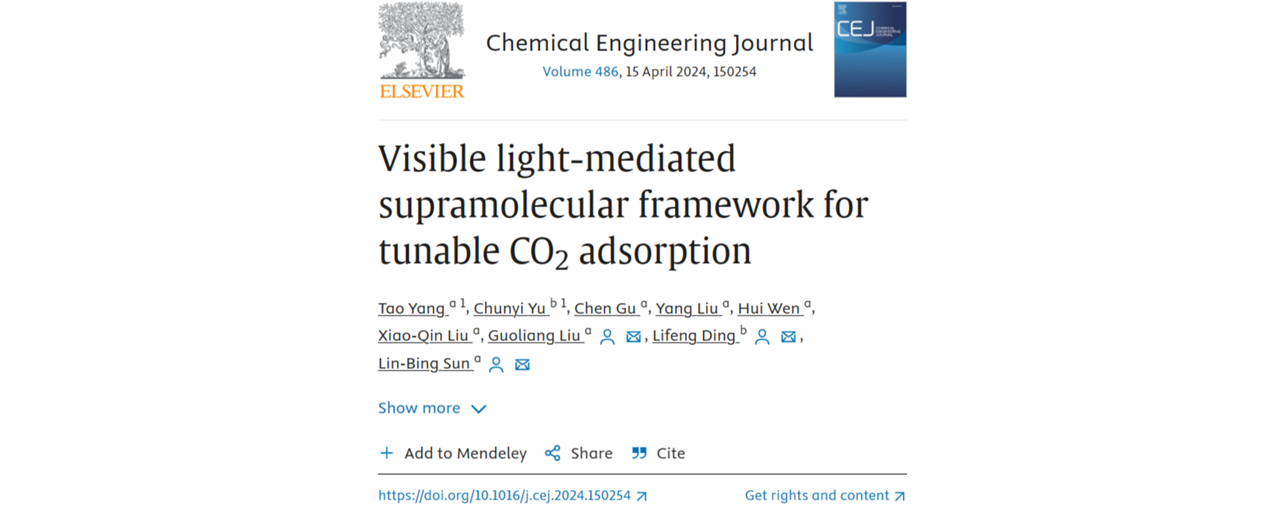08 May 2024
A study entitled “Visible Light-Mediated Supramolecular Framework for Tunable CO2 Adsorption” was recently published in “Chemical Engineering Journal”. As a result of a close collaboration between Prof. Linbing Sun from Nanjing Tech University and Dr. Lifeng Ding from the Department of Chemistry, School of Science at Xi’an Jiaotong-Liverpool University, the research presents the development of a novel visible light-mediated Zr-based metal-organic framework (MOF) constructed supramolecular framework, designated as NUT-104.
 Read the article: https://www.sciencedirect.com/science/article/pii/S1385894724017418
Read the article: https://www.sciencedirect.com/science/article/pii/S1385894724017418
“In recent years, the issue of climate change, with carbon dioxide (CO2) emissions being a significant contributor, has gathered widespread attention. To address this increasingly urgent issue, efforts being made focus on reducing CO2 emissions through advanced technologies like metal-organic frameworks (MOFs) based approach. ”
Dr Lifeng Ding mentioned that these frameworks have high surface area and adaptable properties that can facilitate CO2 capture. However, to broaden their potential applications, it is essential to enhance their functionalities, such as introducing new molecular units to create innovative frameworks. There's also interest in creating light-responsive frameworks capable of capturing CO2 using visible light, rather than harmful UV light, to increase efficiency and sustainability. This research aims to explore the potential of MOFs as a platform for CO2 capture and develop light-responsive frameworks for energy-efficient CO2 capture approaches.
This innovative framework, NUT-104, exhibits enduring porosity and facile hierarchical self-assembly, realized through coordinating the ortho-fluoroazobenzene functional terephthalic acid (2F-Azo-H2BDC) linker with in-situ formed tri-nuclear Zr-clusters. NUT-104 exhibits reversible and controllable CO2 capture and release, occurring through visible light irradiation at 420 and 520 nm, respectively.

Through collaborating with other reseachers, Dr Lifeng Ding’s computational research provides insights into the design principles of light-responsive frameworks, offering potential advancements in CO2 capture technologies. The interdisciplinary approach showcased in the collaboration between computational and experimental chemistry highlights the significance of interdisciplinary research in addressing global challenges. Furthermore, the research emphasizes the importance of understanding molecular-level interactions for functional material design and highlights the potential applications in environmental remediation and sustainable energy technologies.
08 May 2024







